Have a homemade soy-based soba dipping sauce ready in 10 minutes. Cold soba noodles are the perfect meal for a hot summer night.
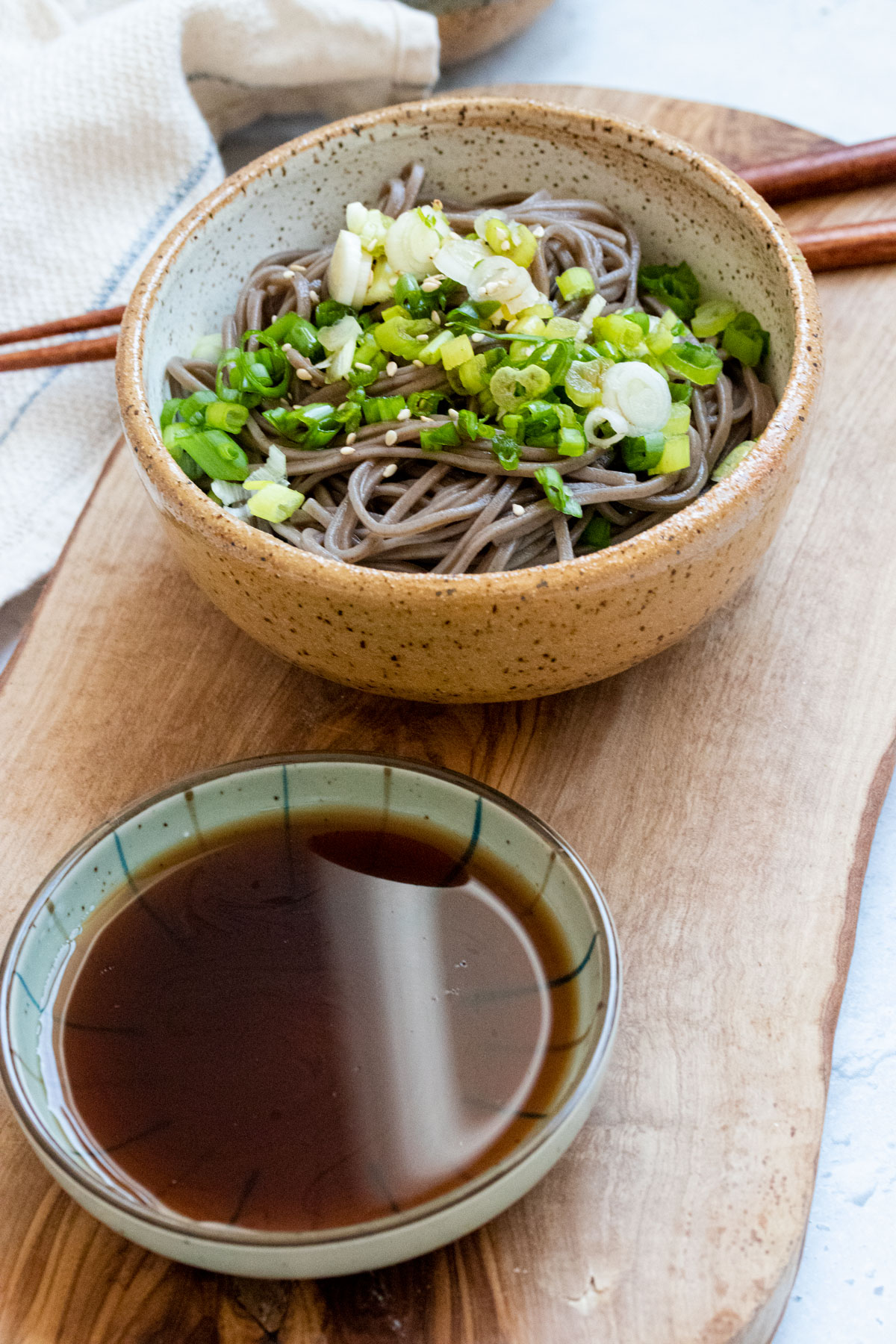
Soba is a Japanese noodle made from buckwheat - giving them a nice, chewy texture and a lightly nutty taste. Soba can either be served cold with a savory and slightly sweet dipping sauce or in a hot broth.
While we'll be using store-bought noodles, the noodles themselves have an entire art to them. If you ever visit Japan, there are plenty of restaurants that specialize only in soba – serving both cold and hot versions and even creating desserts with the remaining buckwheat.
For more noodle dishes that are great for warmer weather, try my Peanut Sesame Cold Noodles or Japchae (Korean Glass Noodle Vegetable Stir Fry).
Ingredients

- Light soy sauce: I always opt for a low-sodium soy sauce
- Dashi: Dashi is a Japanese soup stock that is usually a combination of kelp and bonito flakes and is used as the base for a variety of Japanese broths (such as in miso broth!). Utilizing dashi accentuates or adds an umami flavor. My favorite brand is HonDashi.
- Mirin: Mirin is a sweet rice wine and is a common ingredient in Japanese cooking. If you don't have mirin, you can sub with granulated sugar mixed with rice vinegar. See Substitutions.
- Water
- Buckwheat noodles
- Scallions: Chop finely and sprinkle either into the dipping sauce or mixed on top of the buckwheat noodles.
- Sesame oil (optional)
- Toasted white sesame seeds (optional)
What are buckwheat noodles?

These are the buckwheat noodles that I typically purchase at a nearby Korean grocery store. Most Asian grocery stores will carry a variety of brands.
Compared to other noodles, soba has more fiber and more protein. Additionally, depending on the manufacturer of the soba noodles you purchase, the noodles may also be gluten-free (check to make sure the ingredients don't include wheat flour, which some may).
Instructions
- Make the soba dipping sauce by boiling soy sauce, dashi, water, and mirin in a small pot for about 5 minutes. You can make this the night before and place it into a container to cool in the fridge.
- If not making this the night before, make an ice bath in a shallow bowl and place the soba broth in a separate bowl to cool in the ice bath. Or place it in an air tight container in the fridge.
- Boil a pot of water and cook the soba noodles according to package. Rinse under cold water and drain.
- The traditional method is to have the dipping sauce in a smaller, deeper bowl and to take a portion of soba noodles to dip for each bite. However, if you're like myself and want to reduce the number of bowls used, I simply pour the soy-based sauce over the noodles, sprinkle on chopped scallions and toasted white sesame seeds and enjoy!
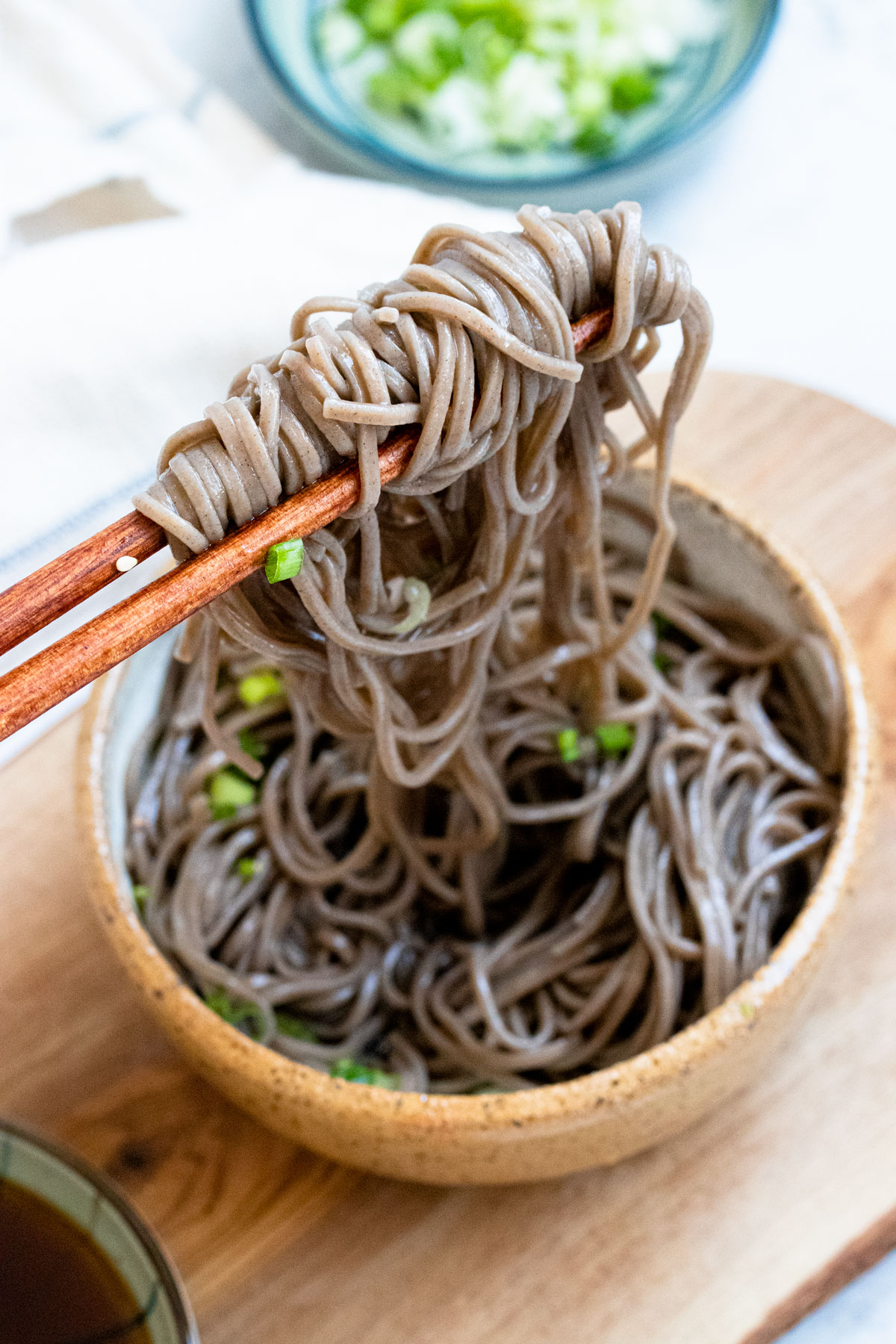
Substitutions
- Mirin: If you don't have mirin, you can substitute with a mixture of rice vinegar (which is more commonly found at home) and granulated sugar. To sub for 1 tablespoon of mirin, boil 1 tablespoon of rice vinegar with ½ teaspoon of granulated sugar until fully dissolved.
- Dashi: If you can't find dashi, you can sub the dashi granules and water with various types of stocks that are available to you. Note that using a different types of stock means the final sauce won't taste similar to the original.
Storage
Store the soba dipping sauce in an airtight container in the fridge. The portions for this recipe won't last for more than a week if you're making this at least 3 times!
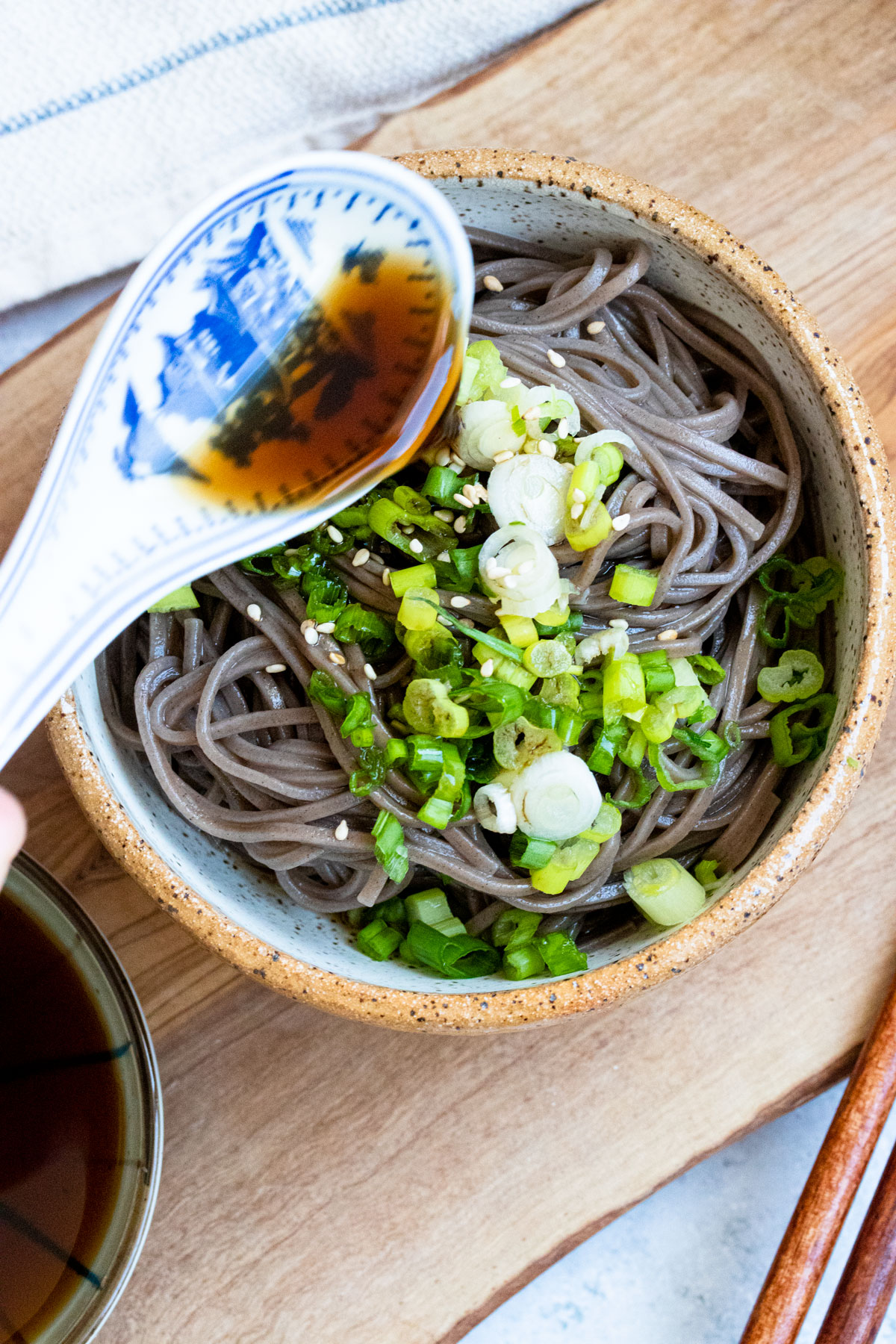
📖 Recipe
Cold Soba Noodles with Dipping Sauce
Ingredients
Soba Dipping Sauce
- ¼ cup light soy sauce
- ¼ cup mirin
- 1 teaspoon dashi
- 1 cup water
Remaining Ingredients
- 250 grams soba
- 2 scallions (chopped)
- Toasted white sesame seeds (optional)
- Sesame oil (optional)
Instructions
- Make the dipping sauce by placing the ingredients in a small pot and boil on medium heat for 5 minutes. If making this the night before, place in an airtight container and let cool in the fridge. If making this the day-of, make an ice bath and place the container of sauce into ice bath to cool faster.
- Boil the buckwheat noodles according to package. When done, rinse under cold water and drain well so the noodles don't become soggy.
- Portion out noodles and then the dipping sauce into a separate bowl. Add chopped scallions and toasted white sesame seeds to the sauce. Separately, you can also add 1 teaspoon of sesame oil to your noodles to add even more depth in flavor.You can also add all the ingredients over the noodles and mix to enjoy!


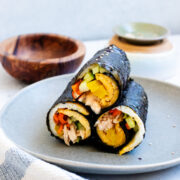
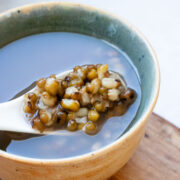







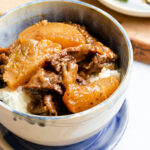


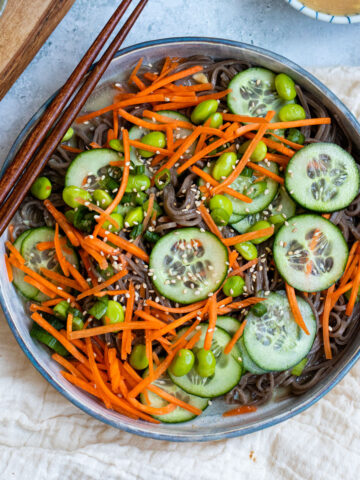



Andrea says
these noodles are the absolute best! such a yummy dish with a tasty sauce! it was a perfect weeknight dinner option this week!
The Sudden Cook says
Love noodles! Might try this one this weekend:)
Jere says
This recipe is just so simple and makes a light meal. This is such a great way to enjoy buckwheat noodles.
Bernice says
YUM! I could eat this bowl of noodles every day. I work from home so I eat a lot of scrambled eggs for lunch. These noodles were just as easy to make and much tastier. This recipe is a keeper!
Helen at the Lazy Gastronome says
This dish is amazing. Glad I made extra - It's delicious.